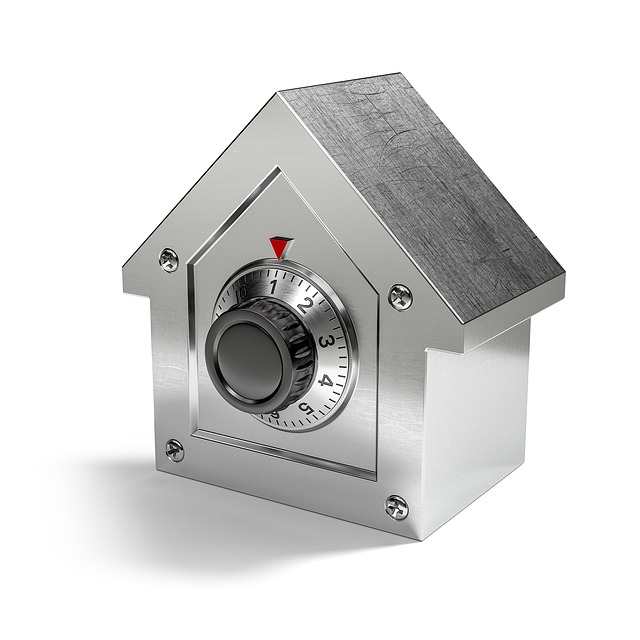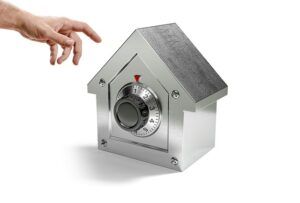Are you considering getting a robot vacuum but worried about it triggering your house alarm? Or perhaps you already own one and want to know if it’s a potential risk? In this blog post, we’ll dive into the intriguing question of whether robot vacuums have the potential to set off house alarms. We’ll explore the technology behind both robot vacuums and house alarms to understand how they interact.
We’ll discuss the different types of house alarm systems and how they respond to movement and sound. We’ll also delve into the operation of robot vacuums, including their sensors, movements, and noise levels. Additionally, we’ll explore real-life experiences and anecdotes from robot vacuum owners to uncover if and how often these devices trigger house alarms. By the end of this post, you’ll have a comprehensive understanding of whether robot vacuums can set off house alarms and what you can do to prevent it from happening. So, let’s unravel the mystery together!
How Do Robot Vacuums Work?
Robot vacuums use various sensors and algorithms to navigate and clean floors autonomously. They typically employ brush rolls, suction, and filters to pick up dirt and debris from different surfaces.
These vacuums are equipped with sensors that detect obstacles, stairs, and drop-offs to avoid collisions and falls. They use a combination of infrared sensors, laser sensors, and cameras to map the environment and create efficient cleaning paths.
The vacuum’s navigation system allows it to move around furniture and other obstacles while ensuring thorough coverage of the floor. Some advanced models can even return to their charging stations automatically when their battery is low.
Robot vacuums can be programmed to operate on a schedule, ensuring that your floors are consistently cleaned without requiring manual intervention. They provide a hands-free cleaning solution for busy individuals and can be controlled remotely through smartphone apps.
The vacuums’ compact size and low profile enable them to reach under furniture and other hard-to-reach areas, providing a comprehensive cleaning experience. They are designed to adapt to different floor types, such as hardwood, carpet, and tile, adjusting their cleaning methods accordingly.
Can Robot Vacuums Trigger Motion Sensors?
When it comes to the question of whether robot vacuums can trigger house alarms, understanding how these devices interact with motion sensors is crucial. Many house alarm systems are equipped with motion sensors designed to detect movement within the home. These sensors are sensitive to changes in the environment and can be triggered by various sources of movement.
Robot vacuums, equipped with sensors and motors, move around a space to efficiently clean floors. As they navigate, they can inadvertently trigger motion sensors in some house alarm systems. This can potentially lead to false alarms and cause inconvenience for homeowners.
Understanding the technology behind both robot vacuums and house alarms is essential in determining whether robot vacuums can set off house alarms. House alarm systems utilize different types of sensors, including passive infrared (PIR) sensors and acoustic glass break sensors, to detect motion and sound within the home. These sensors are designed to differentiate between normal household activities and potential security threats.
On the other hand, robot vacuums are equipped with various sensors to aid in navigation and obstacle avoidance. These sensors include infrared sensors, laser sensors, and cameras that enable the robot vacuum to detect objects, walls, and drop-offs. Additionally, robot vacuums are designed to operate quietly to minimize disturbance while cleaning.
The movement and noise generated by robot vacuums can potentially trigger motion sensors in house alarm systems. This scenario can occur when the robot vacuum moves within the range of the motion sensors or produces sound that is interpreted as suspicious activity by the alarm system.
To provide a comprehensive understanding of whether robot vacuums can set off house alarms, it’s important to delve into the operation of robot vacuums. Robot vacuums are equipped with motors, brush rolls, suction mechanisms, and filters to effectively clean floors. These devices utilize advanced algorithms and sensors to autonomously navigate and clean various floor surfaces.
In addition to their cleaning capabilities, robot vacuums are programmed to detect obstacles, stairs, and drop-offs to avoid collisions and falls. They employ a combination of sensors, such as bump sensors, cliff sensors, and wall sensors, to navigate and maneuver around objects in the home.
Furthermore, robot vacuums are designed with smart navigation systems that enable them to map the environment and create efficient cleaning paths. They can adapt to different floor types and heights, making them versatile for use in diverse household settings.

What Are the Best Practices for Using Robot Vacuums in Homes with Security Systems?
When using a robot vacuum in a home with a security system, it’s important to consider the type and placement of motion sensors used in the security system. Ensure that the robot vacuum’s scheduled cleaning times do not coincide with the armed periods of the security system to avoid any potential conflicts. It’s advisable to inform the security system provider about the presence of a robot vacuum in the home, as they may provide guidance on minimizing interference with the security system.
Additionally, some security systems offer the option to adjust the sensitivity of motion sensors, which can help prevent false alarms triggered by the robot vacuum. Placing physical barriers or “no-go” zones to prevent the robot vacuum from entering sensitive areas monitored by motion sensors can also be an effective practice. By following these best practices, homeowners can enjoy the convenience of a robot vacuum without compromising the effectiveness of their security system.
Are There Ways to Prevent Robot Vacuums from Setting off House Alarms?
Yes, there are several ways to prevent robot vacuums from setting off house alarms. One effective method is to adjust the sensitivity of the motion sensors in the security system. By doing so, the robot vacuum’s movements are less likely to trigger false alarms.
Another approach is to create physical barriers or “no-go zones” for the robot vacuum. This can be achieved by using boundary markers or virtual walls provided by some robot vacuum models. These barriers can prevent the robot vacuum from entering areas where motion sensors are active.
By adjusting the cleaning schedule of the robot vacuum, homeowners can minimize the chances of it activating motion sensors while the security system is armed. This can be particularly useful for scheduled cleanings during times when the occupants are away from home.
Some advanced robot vacuums come with the ability to integrate with smart home systems. By utilizing this feature, homeowners can synchronize the operation of the robot vacuum with the status of the security system, ensuring that it does not create false alarms.
Additionally, regular maintenance of the robot vacuum is important to prevent it from triggering house alarms. This includes keeping the sensors and brushes clean, as well as ensuring that the robot vacuum’s navigation system is functioning properly.
Moreover, consulting the user manual of the robot vacuum is crucial for understanding its capabilities and features related to security system compatibility. This can provide valuable insights into specific settings or modes that can help prevent false alarms.
Implementing these preventive measures can significantly reduce the likelihood of robot vacuums setting off house alarms, allowing homeowners to enjoy the convenience of automated cleaning without compromising their home security.
The Bottom Line: Ensuring Your Robot Vacuum Doesn’t Interfere with Home Security Systems
When using a robot vacuum in a home with a security system, it’s important to consider potential interactions between the two. To prevent false alarms, it’s crucial to understand how the robot vacuum operates and how it may trigger motion sensors.
Some robot vacuums use infrared or laser sensors for navigation, which could potentially be mistaken for human movement by the security system. It’s important to test the robot vacuum in each area of the home to identify any potential issues with the security system.
Placing visual markers or boundary strips can help the robot vacuum stay within designated areas and avoid triggering motion sensors. Additionally, scheduling cleaning sessions when the security system is unarmed can minimize the risk of interference.
Regular maintenance of both the robot vacuum and the security system can help ensure they operate harmoniously in the same space. Checking and adjusting the sensitivity of motion sensors can also help prevent false alarms caused by the robot vacuum’s movements.
In some cases, updating the security system’s software or firmware can provide better compatibility with the robot vacuum, reducing the likelihood of false alarms. Consulting with the security system provider or a professional installer can offer valuable insights into optimizing the system for use alongside a robot vacuum.
Ultimately, by understanding the technology behind both the robot vacuum and the security system, and implementing practical solutions, it’s possible to enjoy the convenience of a robot vacuum without compromising home security.

